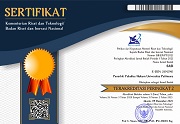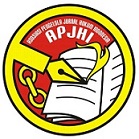The Title are Written with Book Antique Bold (16 pt) and Preferably Not More Than 18 Words, Align Left
The title should be straightforward and informative.
Avoid using subtitles.
Avoid the title which includes the location of the research.
Written full name and without using a title.
Affiliation example: Faculty of Law, Universitas Pattimura, Ambon, Indonesia. (
see SASI Template)
The email of the author(s). If more than 1 author, add "*" sign after the email of the corresponding author.
(Abstracts are written in English. Writing abstract title using bolds for abstract substance written Book Antiqua, 10 pt, italic, 1 space, max 300 words).
Introduction: provides a brief introduction to the problem under study. For example: This article analyzes competition laws related to the abuse of market position. ( max 85 words)
Purposes of the Research: briefly describe the purpose of this study, For example: The purpose of this article is to survey predatory pricing as a phenomenon both inside and outside the European Union. (max 65 words)
Methods of the Research: Briefly state the research method based on a focus of study, namely empirical research, or normative research, with the research approach used. (max 65 words)
Results / Main Findings / Novelty/Originality of the Research: What is new in this Research that may benefit readers and how it is advancing the existing knowledge or creating new knowledge in this subject. It is at the heart of a research report because a finding is what the reader is looking for. The findings component does not have to present all the things that are found in the research, it is presented that the findings are relevant to the nature of this research. For example: The results show that The findings of this study prove that businesses that reached their dominant position before the recession had a significant advantage over small businesses. However, they cannot be compelled to act on the same basis for very long, which is why a more US-like model would be useful for controlling some of these business behaviors. (max 85 words).
Keywords written in English. Key writing uses Book Antiqua, 10 pt in size, italics. Keywords are written in words or phrases, preferably in phrases. Keywords consist of 3-5 words or 3-5 phrases and must be separated by (;) semicolons, not commas (,).
1. INTRODUCTION.
The introduction should be clear and provide the issue to be discussed in the manuscript. Before the objective, authors should provide an adequate background and a very short literature survey to record the existing solutions, to show which is the best of previous research, to show the main limitation of the previous research, to show what you hope to achieve (to solve the limitation) and to show the scientific merit or novelties of the paper.[1] At the end of the paragraph, the author/s should end with a comment on the significance concerning the identification of the issue and objective of the research.[2] This article analyses the comparative competition law related to the abuse of a dominant market position using the strategy of predatory pricing by undertakings in the European Union (hereinafter ‘EU’). For this purpose, a precise case study of the Valio case has been made.[3] Antti Aine, Adjunct Professor of general competition law at the University of Turku as an expert in the field of European Competition Law, has been interviewed for this article.[4] Also, EU law on predatory pricing has been compared to the United States’ predatory pricing law.
Therefore, this article explores the following research questions; whether the EU Competition law policy is already excessively restrictive, and if so, what is the effect on the business development of undertakings with only one nationally dominant market position and, whether the products, that are legally classified as belonging to different product markets, belong de facto to the same product market in case of being fully interchangeable with each other?.
[2] Example for Journal Articles references: Muchtar Anshary Hamid Labetubun, “A Legal Awareness of Copyright on Regional Song Creators,” International Journal of Law Reconstruction 5, no. 1 (2021): 49–61, https://doi.org/10.26532/ijlr.v5i1.15406
[4] Vinod Dhall, ed. Competition law today: Concepts, issues, and the law in practice. (Oxford: Oxford University Press, 2007), 83.
2. LITERATURE REVIEW (OPTIONAL)
3. METHODS
The method is optional for original research articles. This method is written in descriptive and should provide a statement regarding the methodology of the research. This method as much as possible to give an idea to the reader through the methods used. This method is optional, only for original research articles.[1]
Example of writing Research Methods.
This paper uses normative legal research methods because the focus of the study departs from the blurring of norms, using approaches: statute approach, conceptual approach, and analytical approach. The technique of tracing legal materials uses document study techniques, as well as analysis of studies using qualitative analysis.
[1] Peter Mahmud Marzuki, Penelitian Hukum, (Jakarta: Kencana, 2007), h. 56. https://doi.org/340.072.
4. RESULTS AND DISCUSSION
The writing of the Results and Discussion section contains the results of research findings (scientific findings) which is followed by a scientific discussion. The description of the discussion in the Results and Discussion chapter is descriptive, analytical, and critical. The description of the discussion must be adjusted to the sequence of legal issues that are the main elements of the study. Theories included in the theoretical framework should be cited in this chapter. The state of the art listed in the Introduction Section is also reviewed and elaborated in the Results and Discussion Section. The analysis in the Results and Discussion section can be supported by a table that is presented horizontally. Table presentation is equipped with “Table Title” and “Table Source.” Each Table is followed by the author's review and comments as part of the analysis of the Tables presented. In addition to the table, the provisions of the Act or other regulations presented are accompanied by studies and opinions of the authors in strengthening and sharpening the analysis of articles submitted for publication.
Tables and Figures are presented center and cited in the manuscript. The figures should be readable and at least have a resolution of 300 DPI (Dots Per Inch) for good printing quality.
A. Main Heading of the First Analysis or Discussion
This section is the most important section of your article. The analysis or results of the research should be clear and concise. The results should summarize (scientific) findings rather than provide data in great detail. Please highlight differences between your results or findings and the previous publications by other researchers
B. Main Heading of the Second Analysis or Discussion etc..
This section is the most important section of your article. The analysis or results of the research should be clear and concise. The results should summarize (scientific) findings rather than provide data in great detail. Please highlight differences between your results or findings and the previous publications by other researchers.
C. etc…
5. CONCLUSION
The conclusion contains a description that should answer the objectives of the research. Provide a clear and concise conclusion. Do not repeat the Abstract or simply describe the results of the research. Give a clear explanation regarding the possible application and/or suggestions related to the research findings.
ACKNOWLEDGMENTS (OPTIONAL)
Recognize those who helped in the research, especially funding supporters of your research. Include individuals who have assisted you in your study: Advisors, Financial supporters, or many other supporters i.e. proofreaders, Typists, and Suppliers who may have given materials.
REFERENCES
References in research articles and conceptual ideas contain all the references used in the study. References used in writing are sourced from publications and publications in the last 10 (ten) years. The composition of the reference list/bibliography is highly recommended to maximize the use of primary sources (60%) in the form of national journals, international journals, theses, dissertations, and conference proceedings both nationally and internationally. Other sources (40%) can be books or other reference sources. Each article submitted uses a minimum of 16 (sixteen) references by maximizing primary sources, and only references used as citations are written in the reference list, and are written in alphabetical order by the author.
The Journal SASI uses the Chicago Manual of Style 17th edition (full note) in the References at the end of the manuscript. Cite only items that you have read and written in footnotes. Please use Reference Manager Applications like EndNote, Mendeley, Zotero, etc. Use other published articles in the same journal as models. All publications cited in the text should be included in the References section and arranged alphabetically. For example:
Journal Article:
Footnotes:
1 Muchtar Anshary Hamid Labetubun, “A Legal Awareness of Copyright on Regional Song Creators,” International Journal of Law Reconstruction 5, no. 1 (2021): 49–61, https://doi.org/10.26532/ijlr.v5i1.15406.
2 La Ode Angga et al., “Effectiveness of Law Number 41 the Year 1999 in the Case of Illegal Logging in Maluku Province,” Cepalo 3, no. 2 (2019): 141–52, https://doi.org/10.25041/cepalo.v3no2.1848.
References (in alphabetical order):
Angga, La Ode, Barzah Latupono, Muchtar Anshary Hamid Labetubun, and Sabri Fataruba. “Effectiveness of Law Number 41 the Year 1999 in the Case of Illegal Logging in Maluku Province.” Cepalo 3, no. 2 (2019): 141–52. https://doi.org/10.25041/cepalo.v3no2.1848.
Labetubun, Muchtar Anshary Hamid. “A Legal Awareness of Copyright on Regional Song Creators.” International Journal of Law Reconstruction 5, no. 1 (2021): 49–61. https://doi.org/10.26532/ijlr.v5i1.15406.
Book:
Footnotes:
1 Teng Berlianty, Hukum Organisasi Perusahaan (Sidoarjo: Zifatama Jawara, 2019), p. 1.
2 Irwansyah, Penelitian Hukum; Pilihan Metode dan Praktik Penulisan Arikel. (Yogyakarta: Mirra Buana Media, 2020), p. 164-65.
References (in alphabetical order):
Irwansyah, Penelitian Hukum; Pilihan Metode dan Praktik Penulisan Arikel. Yogyakarta: Mirra Buana Media, 2020.
Berlianty, Teng. Hukum Organisasi Perusahaan. Sidoarjo: Zifatama Jawara, 2019.
![]()

















